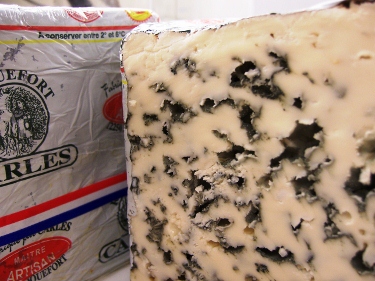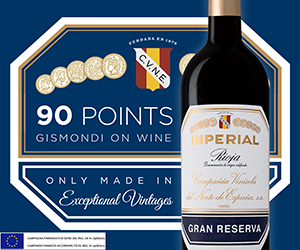Roquefort is probably the best known and the possibly the most misunderstood of blue cheeses from France.
Roquefort is probably the best known and the possibly the most misunderstood of blue cheeses from
Roquefort is made from fresh sheep's milk, taken from sheep grazing on the limestone plateau of this southern department. The milk is transported in small stainless steel containers, so that the milk is not shaken too much in transportation, to preserve the delicate texture and flavour of the milk. The milk cannot be pasteurized or homogenized in accordance with the AOC designation and tradition.
The most important ingredient in Roquefort besides sheep milk is Penicillium Roqueforti. This mold is the secret that makes the taste of the cheese unique. The mold is specifically grown in special large loaves of rye bread. The bread is left in natural caves in the area until the centre has turned almost entirely to mold, and then the loaves are cracked open and the mold is ground for addition to the cheese curd before it is pressed.
Once the cheese is pressed and drained it is transported to the famous natural caves of the commune. The cheeses are then dry salted for a short period, after which they are left to ripen on oak boards for 3 - 6 months to develope. The perfection of the humidity in the surrounding caves is what marks the other important requirement of the cheese's maturation.
There are a number of Co-operatives and large companies that make Roquefort. Société is said to make approximately 80-90% of the Roquefort sold in the world. All makers must adhere to the strict traditional methods but the company that is one of our favourites is called Carles. This is the only family owned Roquefort producer left. The family has run the company for 3 generations since 1927.
In gathering facts and opinions before I started to write today I asked one of my co workers, Amber, what I should say about Carles (as he is affectionately known in the store). "Practically perfect in every way" is how she answered. Deb, one of our other cheese mongers (who we love although she did desert us to go home to
This is definitely not a shy cheese. The flavour can cut through a lot of other ingredients so it needs to be appreciated unadulterated or tamed with a contrasting flavour. The famous pairing of Roquefort and Sauterne is a good place to start but there are lots of other combinations that can be delicious. Try it drizzled with a strong honey such as Chestnut or Garrigue, or with a cooked fruit compote or with toasted nuts.
Allison Spurrell along with her mother Alice Spurrell are the proprietors of les amis du FROMAGE and the award winning cheese & wine bistro Au Petit Chavignol. She is a judge for the DFC Canadian Cheese Grand Prix and the PNE Artisan Cheese competition. She is also a member of the Guilde des Fromagers Confrerie du Saint-Uguzon and the American Cheese Society.
Les amis du FROMAGE w buycheese.com w Kitsilano 1752 W. 2nd Ave T 604-732-4218 w East Van 843 E. Hastings St T 604-253-4218
Au Petit Chavignol w aupetitchavignol.com w 843 E. Hastings St T 604-255-4218
Gismondi on Wine suggests the following wines to pair with Roquefort:

 quicksearch
quicksearch






